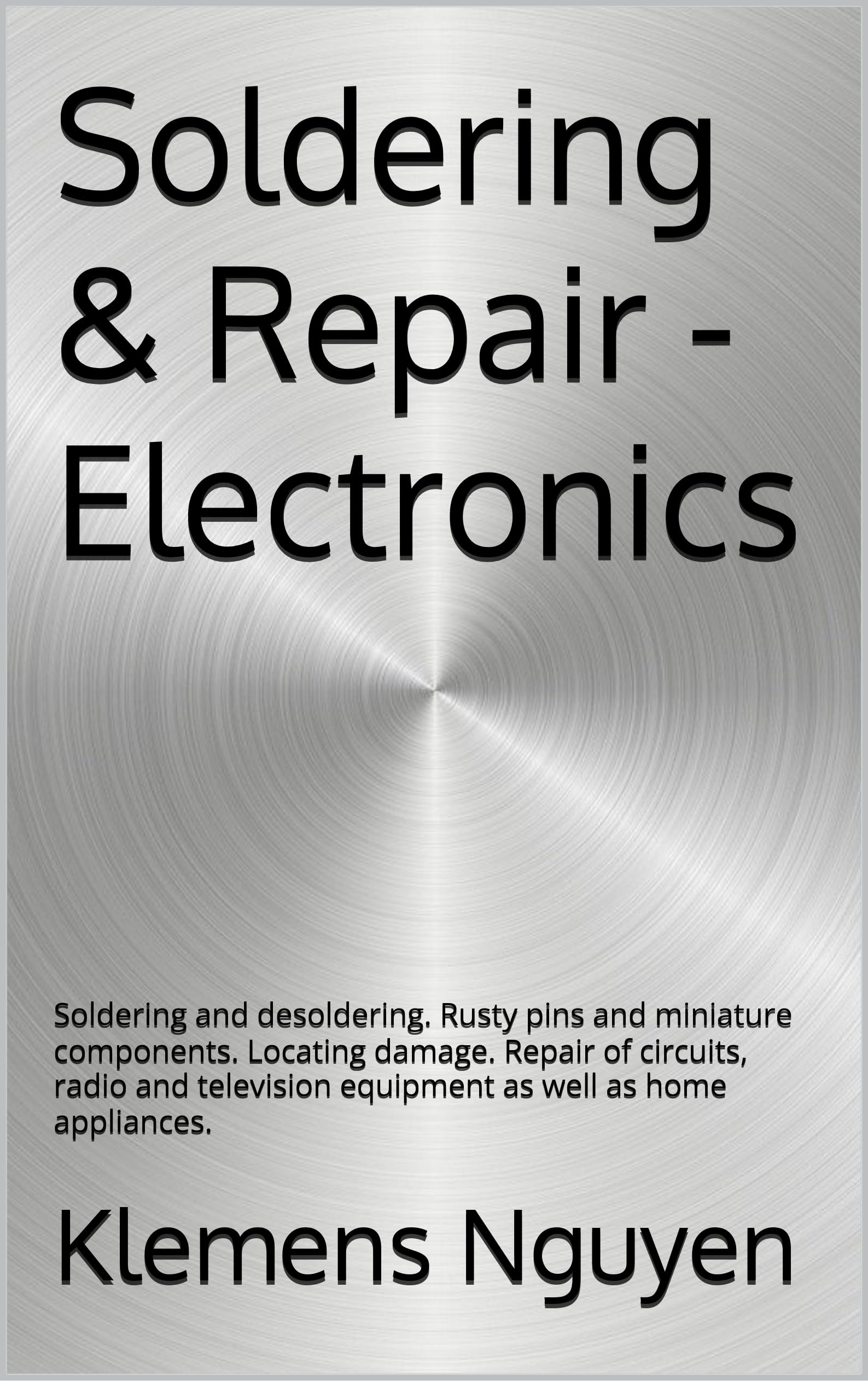Soldering is a skill that allows you to produce or repair:circuits,modelsor artistic products.It’s unbelievable, but there are not many professionals who know how to solder well.In this book you will learn:what tools are needed for soldering,how to solder,how to deal with difficult to solder tarnished surfaces,how to make the simplest tool for practicing soldering;can solder be reused;what should be heated with a soldering iron tip;what can the mouse eraser help with;how practitioners protect soldered elements from overheating;is it possible to solder a spider;when the voltages add up, and when the current capacities.Have you ever seen how people professionally solder electronic circuit boards? They are a bit like robots. They stick the tip and solder to the solder point, 1…2…3 seconds and solder another one. The connections are almost identical. Each is correct in shape and structure. The good news is that you don’t need any special predispositions for this job.Do you want to achieve the same proficiency?Thanks to this book, you will learn how to:repair household appliances,solder and desolder without damaging the components.Have you seen how many people are looking for help in repairing electronic devices, household appliances on Facebook groups? The new skill will save you several dozen dollars or earn several hundred dollars on a regular basis by assembling electronic circuits after hours.Click BUY NOW and get a new, wanted skill!Table of contents:IntroductionI.1. What is soldering and what is it used for?I.2. What is the difference between soft and hard soldering?I.3. Is there a threat to the solderer?I.4. Cleaning and degreasing before solderingI.5. Fixing elements before solderingChapter 1. Tools and materials1.1. Tools1.2. Soldering materials1.3. The pewters are different1.4. Insulating materials1.5. Which soldering iron and for what?1.6. SMD soldering tip1.7. OhmmeterChapter 2. Good habits2.1. What is static electricity?2.2. How to choose a tip for a soldering iron?2.3. How to remove impurities from a heated tip?2.4. Is it possible to restore the correct shape of the tip?2.5. Tips with a protective layer2.6. Tip temperature2.7. Reuse of elementsChapter 3. Basics of soldering3.1. Elements setting3.2. Ensuring proper spacing of elements3.3. The role of the flux3.4. Soldering technique3.5. 1… 2… 3… spherical and shiny3.6. Cold joint and overheated solder3.7. Cleaning the connection after solderingChapter 4. DIY4.1. Connection of the chandelier4.2. A cord with a plug4.3. Connecting two wires4.4. Location of breaks and short circuits in cables4.5. Broken cable repair4.6. Attachment to connectorsChapter 5. Improving skills5.1. 10×10 grid5.2. How to protect electronic components from overheating during soldering?5.3. Little men made of electronic components5.4. Resistors soldering5.5. Spider soldering5.6. Battery connectionChapter 6. Electronic components6.1. Soldering components to printed circuit boards6.2. Soldering to a multilayer board6.3. Soldering the cables to the printed circuit board6.4. IC socket soldering6.5. Soldering the diode6.6. Soldering of the LED6.7. Soldering transistors6.8. Soldering integrated circuitsChapter 7. Repairs7.1. How to find a break in the path with a hair dryer?7.2. Location of breaks and short circuits7.3. Removing short circuits between tracks7.4. Cleaning soldering points after flooding them with tin7.5. Repair broken paths7.6. Why is the radio buzzing, i.e. no ground7.7. Desoldering 1
save
$5.99Soldering & Repair – Electronics: Soldering and Desoldering. Rusty Pins and Miniature Components. Locating Damage. Repair of Circuits, Radio and Television … – Easy and Simple. Book
$0.00$5.99
Learn essential soldering skills to create and repair electronics, tools, and models. Master techniques to save money or earn by fixing household items. Click BUY NOW to start!
| book-author |
|---|









